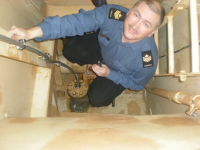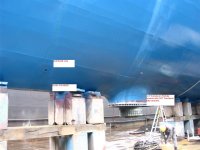- Reaction score
- 7,858
- Points
- 1,160
On the flip side, plenty of people in ops that have also never checked out the galleys, storerooms or machinery rooms, which is awesome when they are going in there for the first time to fight a fire.It's funny/disappointing because, I would have been happy to give a tour and explanation of ops to any cook, storesy, bosn, stoker, etc. if they wanted to come check out Ops.
One of the fun things of being the Engineer that I got to every space onboard during normal rounds, and would usually end up chatting to people and asking them stuff like that, so got a pretty good idea of the whole ship operation.




